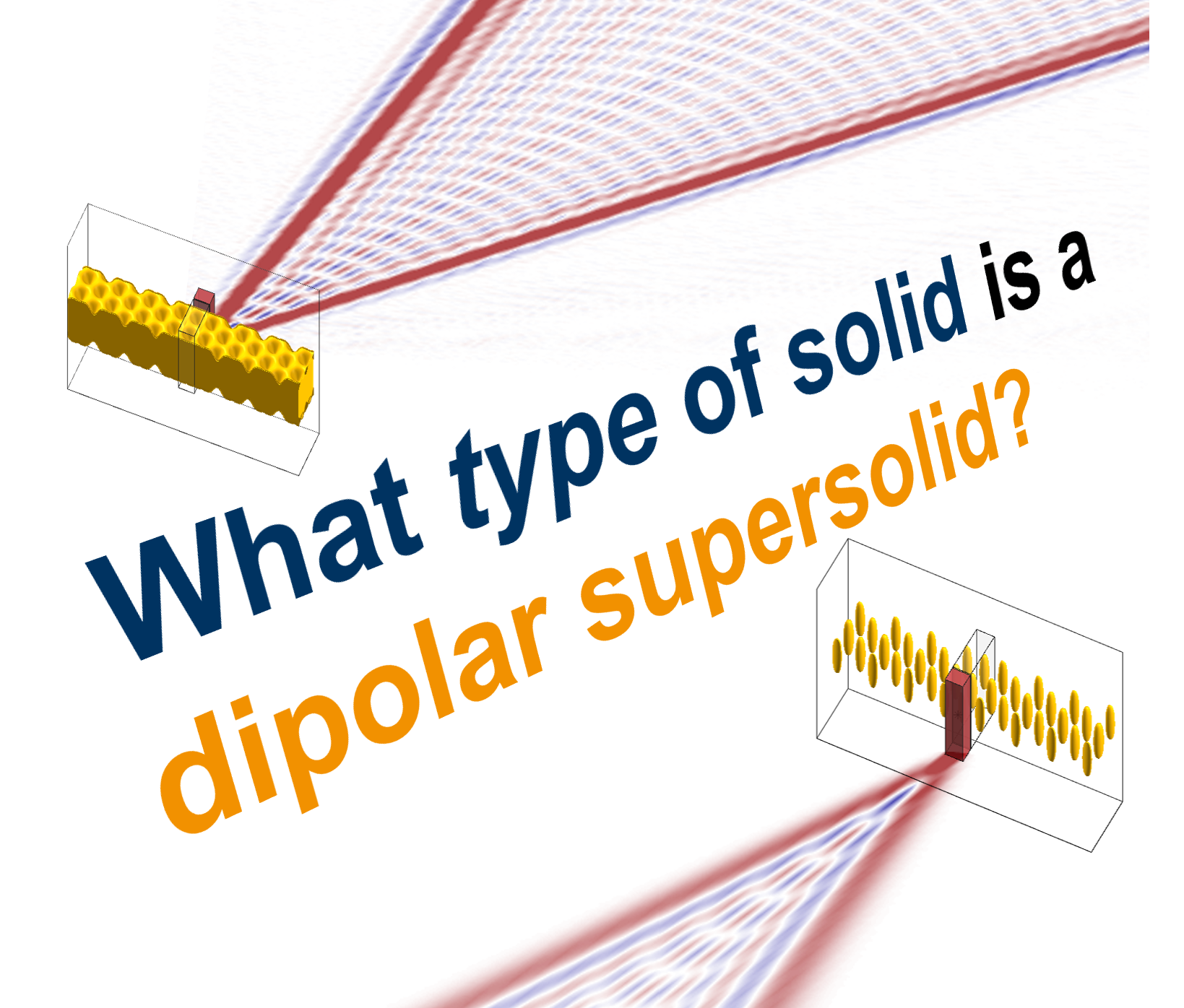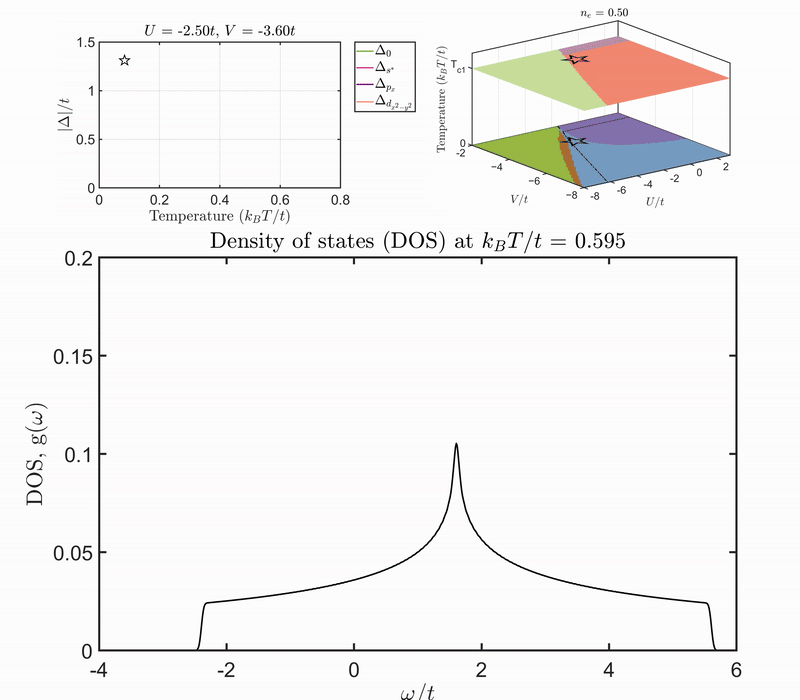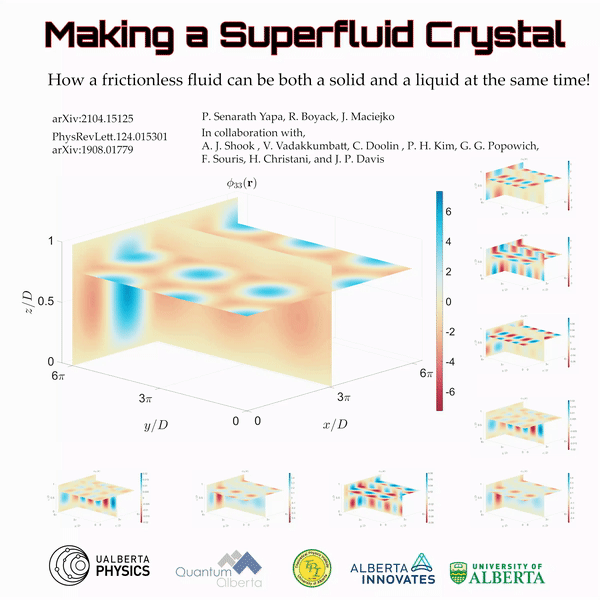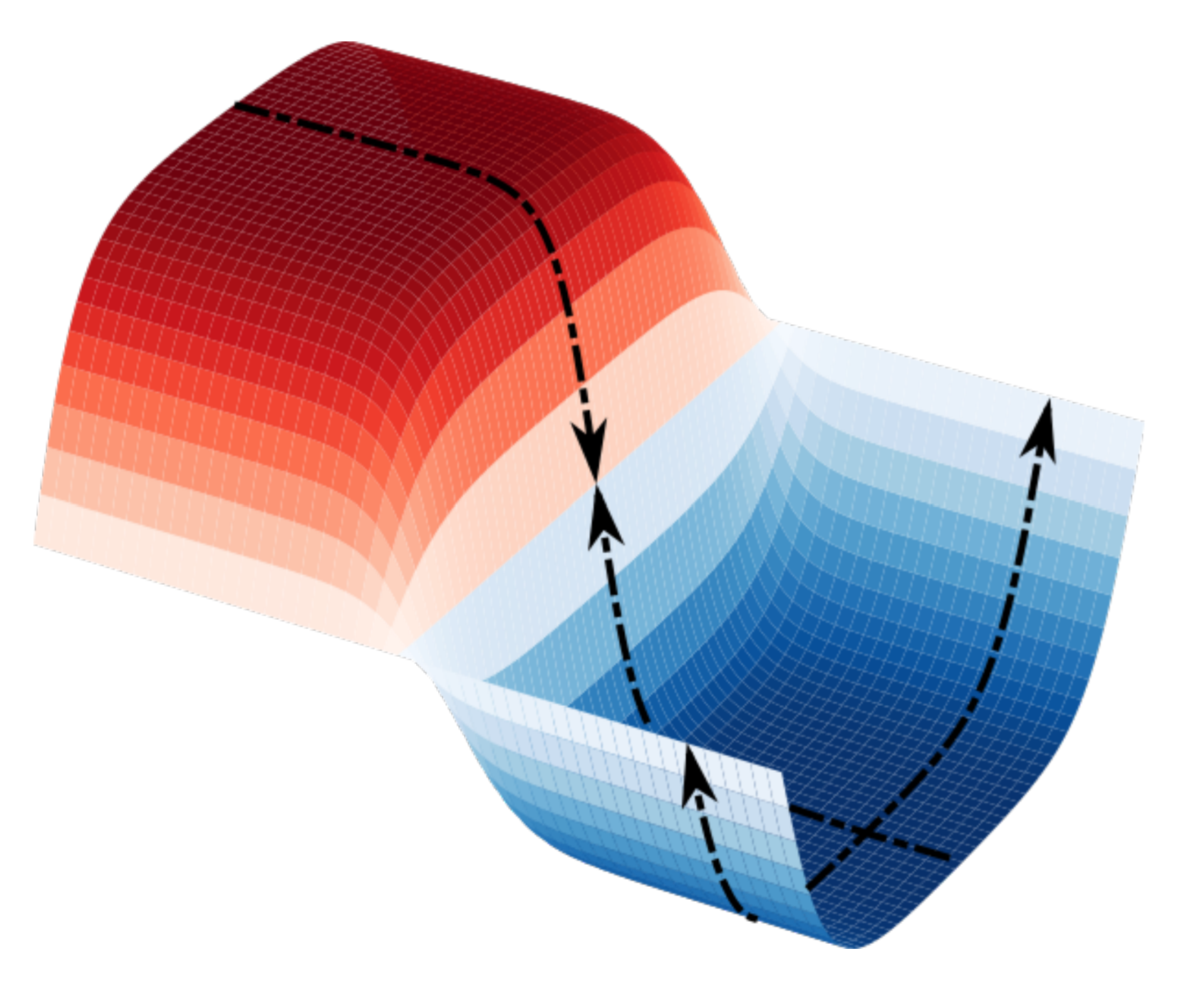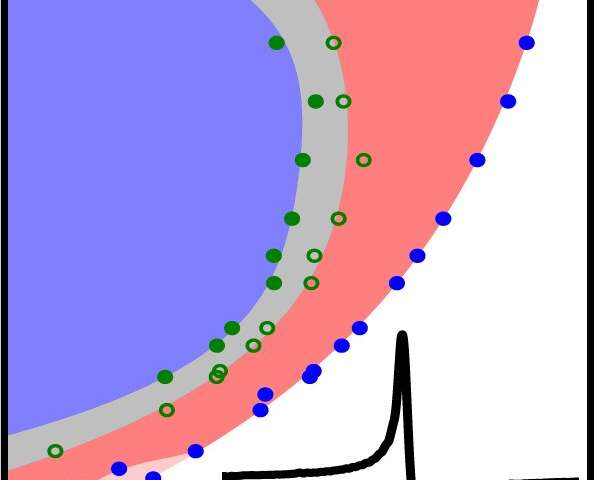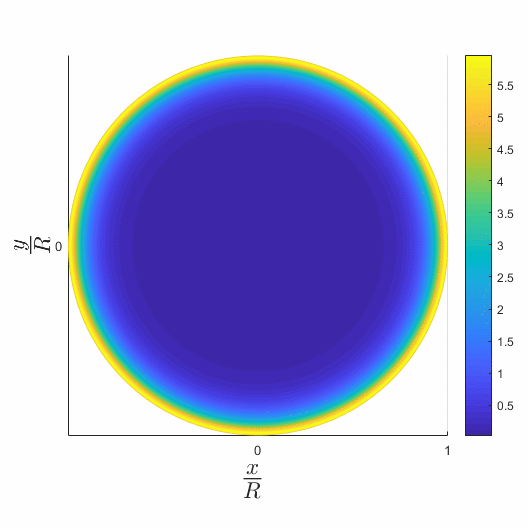Anomalous dispersion of shear waves in dipolar supersolids
Physical Review A 112, L021303 – Published 22 August 2025
P. Senarath Yapa, and T. Bland
Dipolar supersolids—quantum states that are simultaneously superfluid and solid—have had their superfluid nature rigorously tested, while their solid nature remain uncharted. Arguably, the defining characteristic of a solid is the existence of elastic shear waves. In this work we investigate transverse wave packet propagation in dipolar supersolids with triangular and honeycomb structure. Remarkably, the honeycomb supersolid displays anomalous dispersion, supporting waves traveling faster than the transverse speed of sound. While the distinction between anomalous and normal dispersion appears subtle, it has a profound influence on both the transport and scattering properties. For both supersolid phases, we calculate the shear modulus, a key parameter that quantifies the material's rigidity. Our findings are pertinent to current experimental efforts scrutinizing the fundamental properties of supersolids.
